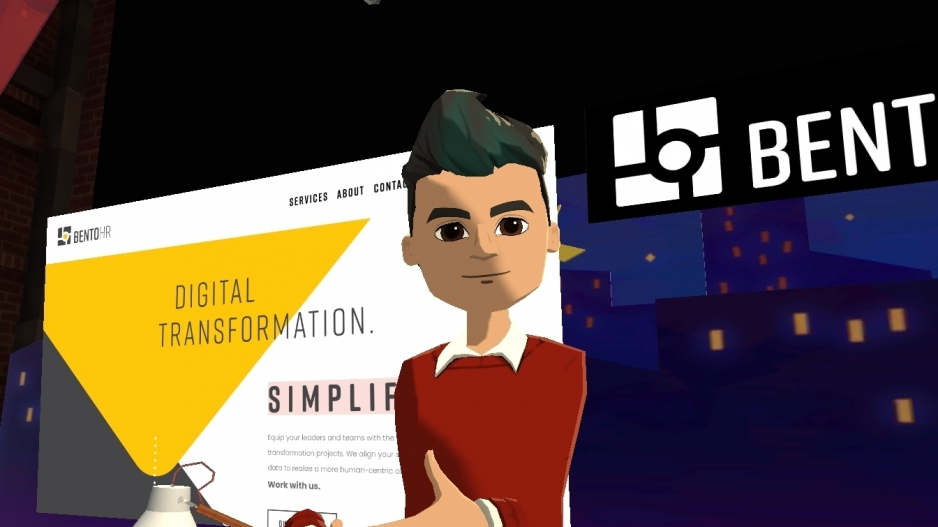It seems like a fantasy for September 2020: A conference room packed with attendees side by side as they gaze upon the main stage where panellist debate the future of the workplace.
But Matt Burns is confident a little hardware can turn that fantasy into reality, in the virtual sense, that is.
“For a business executive group that's looking for solutions around collaboration, and connection and engagement in this new strange world that we're in, immersive technologies is another option for them,” said Vancouver-based Burns, who is organizing the Global HR Summit set for September 8-10.
The summit will be presented in virtual reality, with 50 speakers donning Oculus Quest headsets for the first time to engage with audiences in an artificially rendered environment.
Attendees have the option to put on their own headgear to watch speakers, who will appear as avatars they’ve created for themselves, or else plug in via the less-immersive environment of a 2D computer monitor.
The goal of the event, which will be hosted on Microsoft Corp.’s (Nasdaq:MSFT) Altspace VR platform, is to bring awareness to challenges within organizations and how immersive technologies such as VR can address them.
Burns described the summit, with its digitally rendered avatars and mock audience, as looking similar to 2014’s The Lego Movie, but he insists that work done with a VR cinematographer will make the experience looks quite slick.
It comes as the COVID-19 crisis forces employees to work remotely, leaving colleagues to collaborate mostly over email and video calls.
“The challenge we have is that the adoption is quite low because traditionally VR was in industries that would not lend themselves to a corporate audience. And that's what largely fuelled its ascension into the broader market,” said Burns, a human resources executive who describes himself as an immersive workplace architect.
“We have an opportunity with the people in the [Global HR Summit] to really write the future going forward because once corporate enterprises are in the game, it democratizes access, it reduces barriers to entry. The use cases are infinite because the science is behind it and the economics are behind it.”
A growing number of B.C. firms have been focusing on enterprise uses for virtual reality and augmented reality in recent years.
Vancouver-based PrecisionOS has been developing VR training simulations for surgeons, while Surrey-based Conquer Experience Inc. sells its own VR training products mostly to hospitals.
Earlier this year, Finger Food Advanced Technology Group was acquired by Unity Technologies in the latter's efforts to expand beyond gaming.
The Port Coquitlam company, best known for developing enterprise-focused applications for augmented reality headsets, was absorbed into Unity Industrial — a division focused on enterprise services in the realm of real-time 3D (RT3D) content.
And TimberOps, a collaboration between VR/AR studio Llamazoo Interactive Inc. and FPInnovations, has developed a platform that can sub in for expensive field trips for silviculture, harvesting and transportation planning via a process known as digital twinning.
“We're staring at a giant burning platform for change,” Burns said.
“If they [businesses] don't change that traditional business model, it’s going to continue to butt up against this new reality and it's going to be painful. It's going to be poor for business results and it's going to be worse for the employees and the customers who interact with those businesses.”
He said that businesses should be prepared to operate blended workplaces, in which employees work in a combination of offices and from the home.
That means having the ability to tap into immersive – or virtual — environments for team meetings, training sessions or job interviews.
“For example, my team’s now spread around the world and every orientation occurs in VR. I meet them in VR for the first time for an orientation with the headset. Before it would have been a Zoom call or a bunch of emails back and forth with an international team,” he said.
“I've never met some of my team members. Now, I meet them all in VR.”




